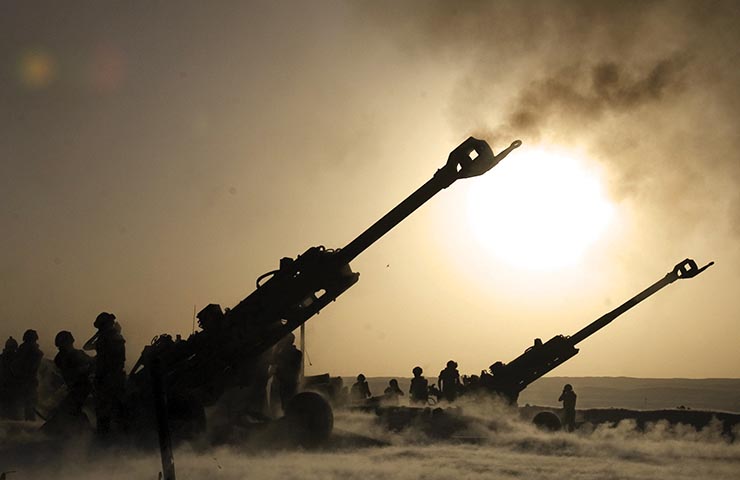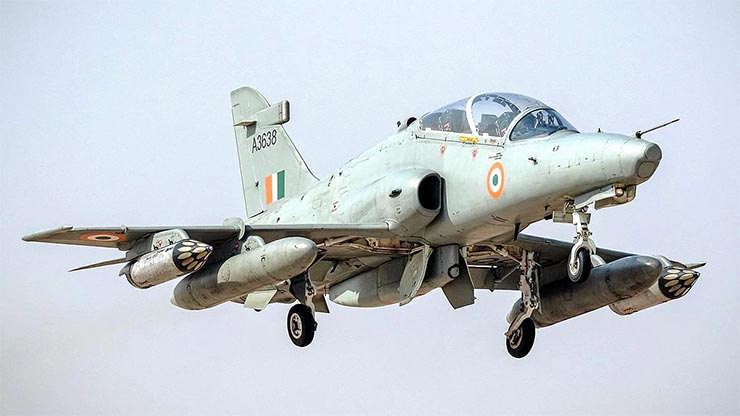In a freewheeling conversation with Editor, Raksha Anirveda on the sidelines of Aero India 2023 Ravi Nirgudkar, Managing Director, BAE Systems – India, Bangladesh, Sri Lanka gave an elaborate description of BAE Systems longstanding association with India, the pivotal role BAE is playing in Indian Armed Forces modernisation journey, alignment with ‘co-creating for a self-reliant India’ strategy and more. Edited Excerpts:
RA. How does BAE Systems view Indian Government’s Aatmanirbhar Bharat initiative. In what way is the company supporting that initiative?
RN. India is a key strategic market for BAE Systems, and we are proud of the longstanding association we have with India spanning seven decades. As a founding partner of defence manufacturing in India, BAE Systems has always supported the development of India’s indigenous defence ecosystem. We are fully in support of the Government’s vision for Aatmanirbhar Bharat and ‘Make in India.’
In line with the Government’s vision, our partnership with India has evolved significantly during the past 10 years and this is reflected in our mission of ‘Co-Creating for a Self-Reliant India’.
In the last few years, the company has increasingly collaborated with the local industry to support the Indian Armed Forces in their modernisation journey. Through our Hawk Mk132 India programme in collaboration with Hindustan Aeronautics Limited (HAL), and the M777 India programme in partnership with Mahindra Defence Systems Limited (MDSL), we are proud to have contributed in modernising India’s defence capabilities and strengthening its national security. Moreover, our collaboration with the local industry for Hawk and the M777 programme has successfully demonstrated the success of Make in India in defence.
As India accelerates towards greater self-reliance in defence, BAE Systems looks forward to further collaborating with the Indian industries and leveraging BAE Systems’ high quality, innovative, cutting-edge niche technology.

RA. Kindly elaborate on how you see the Indian Army’s Artillery programme is progressing and what is the latest update on the BAE Systems M777 ULW Howitzer supplies to the Indian Army?
RN. We take pride in supporting the Indian Army’s Artillery Regiment with our superior, reliable and battle proven M777 Ultra-Lightweight 155mm Howitzer, which is also backed up by local Assembly, Integration and Testing (AIT). The M777 Ultra-Lightweight 155mm Howitzer provides unparalleled tactical and strategic mobility and features a minimal logistical footprint alongside maximum reliability. This means that it can be frequently moved and re-deployed, maximizing survivability, without encountering the IED risks faced by self-propelled systems.
Our partnership with Mahindra Defence Systems Limited (MDSL) to produce the M777 ULH is well known in the defence industry and one that we are very proud to have. With MDSL, we established the local Assembly, Integration and Testing (AIT) in Faridabad, Haryana. The AIT was a fundamental part of the M777 production line and functioned throughout the pandemic.
Across our total relationship across the M777 programme, over 60 businesses are involved with over 50% being SMEs. Additionally, we are also procuring parts from over 50 odd MSMEs and integrating them into the company’s global supply chain. Recently, we have also signed an agreement with PTC Industries to manufacture titanium castings for the Indian M777 Ultra-Lightweight Howitzer (ULH) at their production facility in Lucknow, Uttar Pradesh.
It is an exciting time for us as we have now delivered on our commitment of 145 guns to the Indian Army. As we look ahead, the Long-Term Sustainment Hub for M777 for the Indian Army will be incorporated into their Depot Capabilities. BAE Systems and the broader Indian Supply Chain will support this as the guns continue in service and we are now focused on continuing to strengthen our collaboration with our Indian team-mates to ensure spare parts can be ready and available, whenever and wherever they are needed.
RA. BAE Systems’ Hawk AJT programme in collaboration with HAL is well-known in the industry. Please elaborate more on the programme.
RN. Indeed, the Hawk Advanced Jet Trainer programme is one of our key flagship projects in India and our collaboration with Hindustan Aeronautics Limited (HAL) for this programme is well-known in the defence circle. Our Hawk India programme helped us cement great ties with India’s leading DPSUs like Hindustan Aeronautics Limited (HAL) and gave us an opportunity to assist the Indian Air Force and Indian Navy in their modernization process.
The world-class manufacturing facility we established for Hawk programme in partnership with HAL demonstrates the success of Make in India in defence manufacturing. Building on the success of the Hawk Mk132, which has exceeded 100,000 flying hours with the Indian Air Force and the Indian Navy, we continue to stand by for a potential repeat order to fulfil the Indian Air Force’s requirement for its prestigious aerobatic team, the Surya Kiran.

RA. BAE Systems has significant expertise in the naval and maritime domain. How is the company planning to support the Indian Navy in securing sea borders?
RN. BAE Systems has extensive expertise and experience in designing and developing industry-leading niche defence capabilities. It is one of the leading companies in the world which design and manufacture naval ships and submarines, as well as their state-of-the-art combat systems and equipment.
This expertise is well-reflected in our ever-growing portfolio in maritime domain, which includes aircraft carriers and amphibious assault ships, destroyers, frigates, corvettes, auxiliaries, submarines as well as naval guns and carrier-capable aircrafts such as the F-35 demonstrates the range of our maritime capabilities.
In the last seven decades of our association with India, BAE Systems has also supported Indian Navy with the development of Indian Navy Ship (INS) Nilgiri, a Leander-class frigate, and through our Sea Harriers and Hawk Mk132 Trainer Aircraft. Currently, Indian Navy is taking solid steps towards modernising its defence capabilities and this is well-reflected in the recent successful commissioning of indigenous aircraft carrier, INS Vikrant.
As the Indian Navy moves towards further modernising its capabilities, we believe that with our experience and expertise, BAE Systems is well-positioned to support and collaborate with them in fulfilling our shared vision of strengthening India’s maritime and naval capabilities.
RA. What are the other major defence technologies BAE Systems offering in India?
RN. India is a dynamic military aviation market and all three Armed Forces are looking to expand and modernise their fleets and capabilities. Indian Government also looks keen to procure niche technologies and defence equipment that can best suit Indian Armed Forces current requirements. As we have consistently supported the Indian Armed Forces for the last seven decades, BAE Systems stands committed to support India’s modernisation process in alignment with its ‘co-creating for a self-reliant India’ strategy.
Through our collaboration with Indian Armed Forces for M777 Ultra-Lightweight Howitzers, we have deepened our understanding of their other modernisation requirements which includes tactical and strategic mobility vehicles, Extended Range Artillery, and munitions, as well as the LTSA planning and integration with the Depots. Therefore, our Combat Vehicle 90 (CV90) and BvS10 Beowulf, which are designed to provide strategic mobility, high survivability and protection in any terrain or tactical environment, are well-positioned to support the Indian army in their critical ground missions.
The CV90 platform is engineered to provide optimum mobility and agility. On the ground it delivers first-class performance even in the toughest terrains, providing your personnel with the tactical edge. BvS10 Beowulf is a dual body, amphibious vehicle with well-proven technology that is designed to provide total operational support where other vehicles cannot. We also anticipate potential in the cyber security sector.
RA Elaborate more on the recent Cyber Security Exercise conducted by India’s National Security Council Secretariat (NSCS) and the UK Government in collaboration with BAE Systems.
RN. It was fantastic to play our part in the recent cyber security exercise. Our BAE Systems team facilitated a bespoke scenario based on threat intelligence and operational experiences, with 26 countries taking part. Designed by our engineers, the exercise explored the complexity of decision-making in response to ransomware on Critical National Infrastructure. As cyber threats are becoming more advanced, it was a great experience for us to play our part and give partner nations the opportunity to test their capability in a secure and controlled environment.













